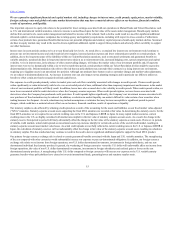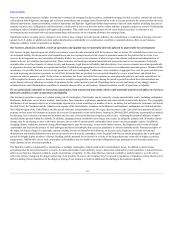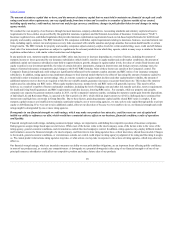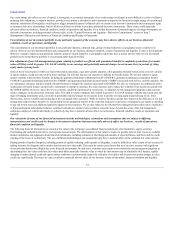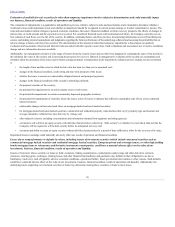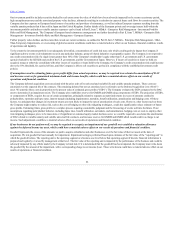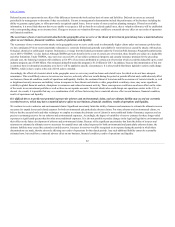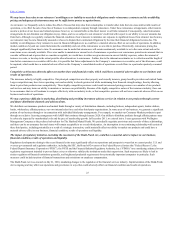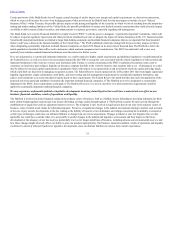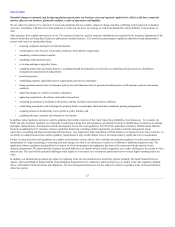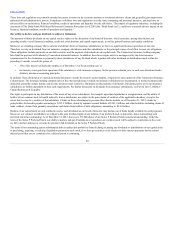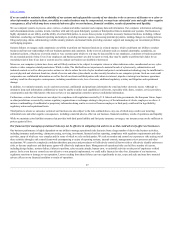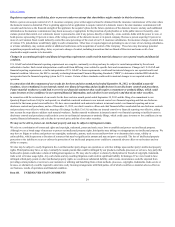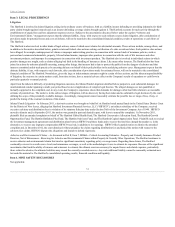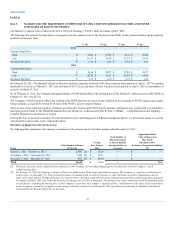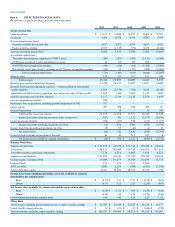The Hartford 2012 Annual Report Download - page 25
Download and view the complete annual report
Please find page 25 of the 2012 The Hartford annual report below. You can navigate through the pages in the report by either clicking on the pages listed below, or by using the keyword search tool below to find specific information within the annual report.
Table of Contents
Potential changes in domestic and foreign regulation may increase our business costs and required capital levels, which could have a material
adverse effect on our business, financial condition, results of operations and liquidity.
We are subject to extensive U.S. and non-U.S. laws and regulations that are complex, subject to change and often conflicting in their approach or intended
outcomes. Compliance with these laws and regulations is costly and can affect our strategy, as well as the demand for and profitability of the products we
offer.
State insurance laws regulate most aspects of our U.S. insurance businesses, and our insurance subsidiaries are regulated by the insurance departments of the
states in which they are domiciled, licensed or authorized to conduct business. U.S. state laws grant insurance regulatory authorities broad administrative
powers with respect to, among other things:
•licensing companies and agents to transact business;
•calculating the value of assets to determine compliance with statutory requirements;
•mandating certain insurance benefits;
•regulating certain premium rates;
•reviewing and approving policy forms;
•regulating unfair trade and claims practices, including through the imposition of restrictions on marketing and sales practices, distribution
arrangements and payment of inducements;
•protecting privacy;
•establishing statutory capital and reserve requirements and solvency standards;
•fixing maximum interest rates on insurance policy loans and minimum rates for guaranteed crediting rates on life insurance policies and annuity
contracts;
•approving changes in control of insurance companies;
•approving acquisitions, divestitures and similar transactions;
•restricting the payment of dividends to the parent company and other transactions between affiliates;
•establishing assessments and surcharges for guaranty funds, second-injury funds and other mandatory pooling arrangements;
•requiring insurers to dividend any excess profits to policy holders; and
•regulating the types, amounts and valuation of investments.
In addition, future regulatory initiatives could be adopted at the federal or state level that could impact the profitability of our businesses. For example, the
NAIC and state insurance regulators are continually reexamining existing laws and regulations, specifically focusing on modifications to statutory accounting
principles, interpretations of existing laws and the development of new laws and regulations. The NAIC has undertaken a Solvency Modernization Initiative
focused on updating the U.S. insurance solvency regulation framework, including capital requirements, governance and risk management, group
supervision, accounting and financial reporting and reinsurance. Any proposed or future legislation or NAIC initiatives, if adopted, may be more restrictive on
our ability to conduct business than current regulatory requirements or may result in higher costs or increased statutory capital and reserve requirements.
Further, because these laws and regulations are complex and sometimes inexact, there is also a risk that any particular regulator's or enforcement authority's
interpretation of a legal, accounting, or reserving issue may change over time to our detriment, or expose us to different or additional regulatory risks. The
application of these regulations and guidelines by insurers involves interpretations and judgments that may not be consistent with the opinion of state
insurance departments. We cannot provide assurance that such differences of opinion will not result in regulatory, tax or other challenges to the actions we have
taken to date. The result of those potential challenges could require us to increase levels of statutory capital and reserves or incur higher operating and/or tax
costs.
In addition, our international operations are subject to regulation in the relevant jurisdictions in which they operate (primarily the Japan Financial Services
Agency, the Central Bank of Ireland and the United Kingdom Financial Services Authority), which in many ways is similar to the state regulation outlined
above, with similar related restrictions and obligations. Our asset management businesses are also subject to extensive regulation in the various jurisdictions
where they operate.
25


